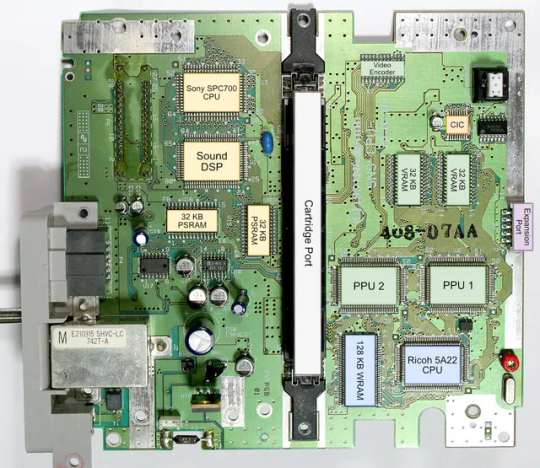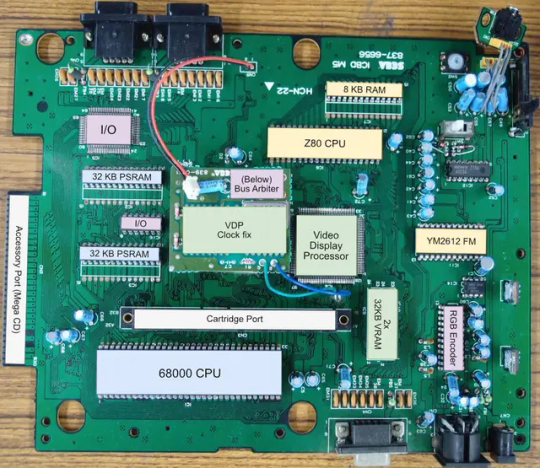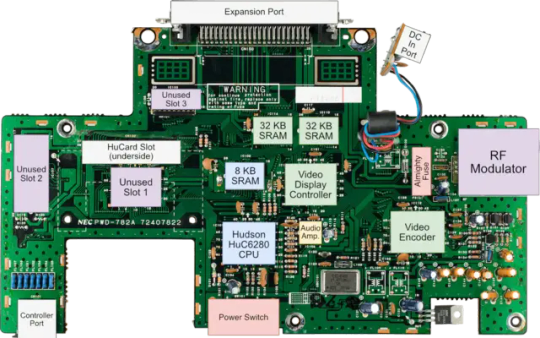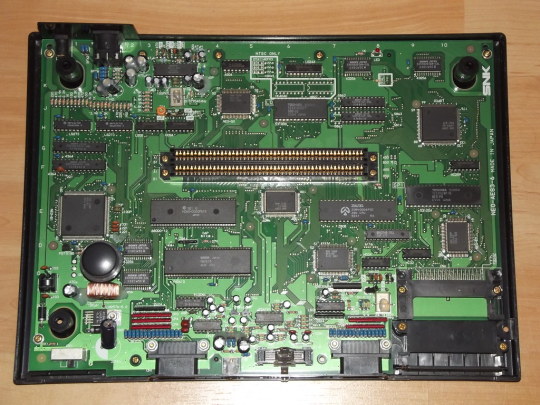#asic engineers
Explore tagged Tumblr posts
Text
0 notes
Text
1 note
·
View note
Text
youtube
Fix : C:\xilinx\14.7_VM\vboxmanage" is not recognized as an internal or external command
Getting Error : C:\xilinx\14.7_VM\vboxmanage" is not recognized as an internal or external command Try These steps below - If you are trying to install Xilinx ISE v14.7 on Windows 10 or Windows 11, You may get the error while installation - "C:\xilinx\14.7_VM\vboxmanage" is not recognized as an internal or external command. What causes the error? If you are at this stage of installation and getting this error that means you already enabled Virtualization in my system BIOS but no virtual box is created in your system. The error is caused by the fact that the vboxmanage command is not in your system's PATH environment variable. The PATH environment variable tells your computer where to look for executable files. When you try to run the vboxmanage command, your computer can't find it because it's not in the PATH variable. How to fix the error : To fix this error, You can setup virtual box before continuing installation of Xilinx ISE v14.7 in Windows 10 or windows 11. so here are the steps. Open the official page for Virtualbox windows hosts : https://www.virtualbox.org/wiki/Downloads Click on the Windows hosts under Virtualbox 7.0.10 platform packages section and download the setup. Follow the instruction to install the virtualbox. Results - Once virtualization is enabled in your BIOS and you setup the virtualbox windows host too. You are good to go to install Xilinx ISE v14.7 in Windows 10 / Windows 11. make sure while installing the Xilinx ISE setup, Oracle VM VirtualBox Manager we just installed, that must be open and running. If it is not running than start the application first and than start Xilinx ISE setup. Let's start installation on Xilinx ISE v14.7 again. Follow the installation Instructions. Bingo, It's installed.
Subscribe to "Learn And Grow Community"
YouTube : https://www.youtube.com/@LearnAndGrowCommunity
LinkedIn Group : https://www.linkedin.com/groups/7478922/
Blog : https://LearnAndGrowCommunity.blogspot.com/
Facebook : https://www.facebook.com/JoinLearnAndGrowCommunity/
Twitter Handle : https://twitter.com/LNG_Community
DailyMotion : https://www.dailymotion.com/LearnAndGrowCommunity
Instagram Handle : https://www.instagram.com/LearnAndGrowCommunity/
Follow #LearnAndGrowCommunity
#HDL Design#Digital Design#Verilog#VHDL#FPGA#ASIC#CPLD#Digital Logic#project#Simulation#Verification#Synthesis#B.Tech#Engineering#Tutorial#Xilinx#v14.7#Installation Error#Windows 10#Windows 11#Solved#Error#Fix#Learn#tutorial#How to fix#How to solve#Digital System Lab#Digital System#Beginner
1 note
·
View note
Text
Hell is terms like ASIC, FPGA, and PPU
I haven't been doing any public updates on this for a bit, but I am still working on this bizarre rabbit hole quest of designing my own (probably) 16-bit game console. The controller is maybe done now, on a design level. Like I have parts for everything sourced and a layout for the internal PCB. I don't have a fully tested working prototype yet because I am in the middle of a huge financial crisis and don't have the cash laying around to send out to have boards printed and start rapidly iterating design on the 3D printed bits (housing the scroll wheel is going to be a little tricky). I should really spend my creative energy focusing on software development for a nice little demo ROM (or like, short term projects to earn money I desperately need) but my brain's kinda stuck in circuitry gear so I'm thinking more about what's going into the actual console itself. This may get techie.
So... in the broadest sense, and I think I've mentioned this before, I want to make this a 16-bit system (which is a term with a pretty murky definition), maybe 32-bit? And since I'm going to all this trouble I want to give my project here a little something extra the consoles from that era didn't have. And at the same time, I'd like to be able to act as a bridge for the sort of weirdos who are currently actively making new games for those systems to start working on this, on a level of "if you would do this on this console with this code, here's how you would do it on mine." This makes for a hell of a lot of research on my end, but trust me, it gets worse!
So let's talk about the main strengths of the 2D game consoles everyone knows and loves. Oh and just now while looking for some visual aids maybe I stumbled across this site, which is actually great as a sort of mid-level overview of all this stuff. Short version though-

The SNES (or Super Famicom) does what it does by way of a combination of really going all in on direct memory access, and particularly having a dedicated setup for doing so between scanlines, coupled with a bunch of dedicated graphical modes specialized for different use cases, and you know, that you can switch between partway through drawing a screen. And of course the feature everyone knows and loves where you can have one polygon and do all sorts of fun things with it.

The Genesis (or Megadrive) has an actual proper 16-bit processor instead of this weird upgraded 6502 like the SNES had for a scrapped backwards compatibility plan. It also had this frankly wacky design where they just kinda took the guts out of a Sega Master System and had them off to the side as a segregated system whose only real job is managing the sound chip, one of those good good Yamaha synths with that real distinct sound... oh and they also actually did have a backwards compatibility deal that just kinda used the audio side to emulate an SMS, basically.

The TurboGrafix-16 (or PC Engine) really just kinda went all-in on making its own custom CPU from scratch which...we'll get to that, and otherwise uh... it had some interesting stuff going on sound wise? I feel like the main thing it had going was getting in on CDs early but I'm not messing with optical drives and they're no longer a really great storage option anyway.

Then there's the Neo Geo... where what's going on under the good is just kind of A LOT. I don't have the same handy analysis ready to go on this one, but my understanding is it didn't really go in for a lot of nice streamlining tricks and just kinda powered through. Like it has no separation of background layers and sprites. It's just all sprites. Shove those raw numbers.
So what's the best of all worlds option here? I'd like to go with one of them nice speedy Motorolla processors. The 68000 the Genesis used is no longer manufactured though. The closest still-in-production equivalent would be the 68SEC000 family. Seems like they go for about $15 a pop, have a full 32-bit bus, low voltage, some support clock speeds like... three times what the Genesis did. It's overkill, but should remove any concerns I have about having a way higher resolution than the systems I'm jumping off from. I can also easily throw in some beefy RAM chips where I need.
I was also planning to just directly replicate the Genesis sound setup, weird as it is, but hit the slight hiccup that the Z80 was JUST discontinued, like a month or two ago. Pretty sure someone already has a clone of it, might use that.
Here's where everything comes to a screeching halt though. While the makers of all these systems were making contracts for custom processors to add a couple extra features in that I should be able to work around by just using newer descendant chips that have that built in, there really just is no off the shelf PPU that I'm aware of. EVERYONE back in the day had some custom ASIC (application-specific integrated circuit) chip made to assemble every frame of video before throwing it at the TV. Especially the SNES, with all its modes changing the logic there and the HDMA getting all up in those mode 7 effects. Which are again, something I definitely want to replicate here.
So one option here is... I design and order my own ASIC chips. I can probably just fit the entire system in one even? This however comes with two big problems. It's pricy. Real pricy. Don't think it's really practical if I'm not ordering in bulk and this is a project I assume has a really niche audience. Also, I mean, if I'm custom ordering a chip, I can't really rationalize having stuff I could cram in there for free sitting outside as separate costly chips, and hell, if it's all gonna be in one package I'm no longer making this an educational electronics kit/console, so I may as well just emulate the whole thing on like a raspberry pi for a tenth of the cost or something.
The other option is... I commit to even more work, and find a way to reverse engineer all the functionality I want out with some big array of custom ROMs and placeholder RAM and just kinda have my own multi-chip homebrew co-processors? Still PROBABLY cheaper than the ASIC solution and I guess not really making more research work for myself. It's just going to make for a bigger/more crowded motherboard or something.
Oh and I'm now looking at a 5V processor and making controllers compatible with a 10V system so I need to double check that all the components in those don't really care that much and maybe adjust things.
And then there's also FPGAs (field programmable gate arrays). Even more expensive than an ASIC, but the advantage is it's sort of a chip emulator and you can reflash it with something else. So if you're specifically in the MiSTer scene, I just host a file somewhere and you make the one you already have pretend to be this system. So... good news for those people but I still need to actually build something here.
So... yeah that's where all this stands right now. I admit I'm in way way over my head, but I should get somewhere eventually?
11 notes
·
View notes
Text
Much attention has been paid in recent times to Australia's over-reliance on American power for our national defence. But far more of our sovereignty has been eroded beneath us by far more insidious means: our extraordinary and increasing reliance on the United States, and China, for technology. For individual citizens going about their day, for the critical infrastructure which enables the functioning of our society, and even our national defence, this weakness has now accelerated beyond the point of no return. This vast technology gap has eaten deeply into Australia's ability to determine its own path. In creating software, in the engineering of critical componentry and in the storage of sensitive data, this gulf is now so vast, it has become impossible to bridge. To endeavour to catch up to the US, for example, would cost so much as to be economic suicide, akin to trying to build a rival space or even nuclear weapons program.
...
Back home, there are obvious fixes. At the minute, Australia has no laws which mandate that its data must be held onshore (with a minor exception for health information). And of the roughly $10 billion a year the Commonwealth spends on information technology, the majority flows straight offshore, much of it into tax havens. Surely more must be spent here? Any change will be hard-won. As entrenched as they now are in Australian society, these companies won't simply yield. When the Department of Home Affairs released a discussion paper on "data localisation" two years ago, Facebook, Apple, Twitter and Google immediately kicked back. The proposal has gathered dust ever since. Attempts at genuine regulation will require not only an active parliament, but a government able to withstand intense lobbying — including, it should be pointed out, from the White House.
6 notes
·
View notes
Text





The Asics GEL-Trabuco™ Terra SPS is designed for the trail runner who needs enhanced traction for uphill and downhill trails. The Asics GEL-Trabuco™ Terra SPS' multi-directional stretch rip-stop upper conforms to the natural movement of the foot while providing excellent ventilation.The Asics GEL-Trabuco™ Terra SPS also features supportive and comfortable midfoot support and cushioning FLYTEFOAM™ technology to provide a softer foot strike at foot strike, while the engineered tread pattern provides advanced traction on a variety of trails.
3 notes
·
View notes
Text
The Dawn of the Decentralized Era with BlockDAG's X1 App! 🌅🚀
While most projects out there write long, boring whitepapers to hype up their new coins, BlockDAG is doing things differently. They’re not just shouting in the void; they’ve brought in over 2 million enthusiastic miners before even launching their BDAG token! That's right, while others are still writing their “game-changing” manifestos, BDAG is already building its empire brick by brick, or in this case, hash by hash! 💪🪙
“Mining is not just for the pros anymore!”
With the sleek and user-friendly X1 Miner App, crypto mining has become as simple as a tap on your smartphone screen. And guess what? Users can earn up to 20 BDAG daily without needing to sell an organ for expensive hardware or **a side deal** with the power companies 🔌💸. Talk about democratizing crypto! But wait, it gets better—this isn’t just about mining; it's about gaming! 🎮💰 Daily boosts, community campaigns, and that sweet Proof-of-Engagement model keep our 2 million miners hungry for more!
But let's take a step back, shall we? What really puts BlockDAG on the map? 💥 It isn’t just their fancy app. It’s the full-blown ecosystem they’re constructing, fusing the best parts of DAG technology with established safety standards. That means 2,000–15,000 transactions per second. I mean, who needs to wait an eternity for transactions? ⏱️✨ And while the competition is busy perfecting their validator setup, BlockDAG is already rolling out over 17,000 ASIC miners. Yes, they’re making all the right moves while we’re still sipping our coffee. ☕🔍
But hurry! The presale for BDAG is still around a jaw-dropping $0.0018 until June 20, a rarity that may just make you **regret** missing this train once we hit the official launch price of $0.05! 🤑🚂 With solid backing (over $313 million raised!), analysts say that early backers could see a mind-blowing 2,660% return. That's not a typo, folks! BlockDAG is engineered for success, and we’re inviting you to join the ride.
So, are you ready to join the revolution? 💥 Be part of a crypto ecosystem that’s actually doing things right, with real utility, real community, and the potential to hit $1 post-launch. Hit up the link to dive in and learn more. Don’t just sit there like a *crypto couch potato*! 🥔⏳
BlockDAG’s X1 App - Get started now!
#Crypto #Blockchain #Mining #DeFi #InvestSmart #CryptoNews #BDAG #EcoSystem #DecentralizeEverything
0 notes
Text
0 notes
Text
Boost Your VLSI Career with the Best Training Institutes in Bangalore
The Rising Demand for VLSI Professionals With the exponential growth of the semiconductor industry, VLSI (Very Large Scale Integration) design has emerged as one of the most in-demand fields in electronics and embedded systems. From smartphones and computers to self-driving cars and smart appliances, VLSI technology plays a crucial role in enabling intelligent digital systems. Due to the increasing dependency on integrated circuits in almost every electronic device, there is a rising need for skilled VLSI professionals. This demand has led many aspiring engineers to seek quality training from reputed institutes in Bangalore, India’s hub for technology and innovation.
Why Bangalore is the Preferred Destination for VLSI Training Bangalore, often called the Silicon Valley of India, is home to numerous semiconductor companies, design houses, and electronics manufacturing firms. This environment creates ample opportunities for practical exposure and industry collaboration. Among the top vlsi institutes in bangalore, candidates can find a range of training programs that combine theoretical knowledge with hands-on lab experience. These institutes offer specialized courses in areas like digital design, physical design, ASIC verification, and FPGA implementation, catering to the evolving needs of the industry. Choosing the right institute in Bangalore gives learners a valuable edge in both knowledge and employment prospects.
Features of an Effective VLSI Training Program An ideal VLSI training program is structured to provide not only strong foundational concepts but also practical exposure using real-time tools and industry-standard software. Courses designed in alignment with current job roles help learners understand design flows, verification methodologies, and layout processes. Instructors with industry experience and the availability of live projects further enhance the learning experience. Institutes that offer placement support, interview preparation, and resume guidance are often preferred by candidates aiming for a stable career in VLSI.
The Role of VLSI Training in Career Advancement Fresh graduates and working professionals who wish to enter the semiconductor domain can significantly benefit from VLSI training. These programs are crafted to develop technical proficiency and make learners job-ready. Bangalore provides a dynamic setting where individuals can access the latest tools, interact with domain experts, and build a professional network. A focused VLSI training program in this city can open the door to numerous job opportunities in top semiconductor firms.
Choosing a Job-Oriented VLSI Institute Enrolling in a job oriented vlsi training institute in bangalore can be a game-changer for anyone aiming to enter the core electronics field. Such institutes focus on equipping students with industry-relevant skills and practical expertise, thus improving their employability. These job-oriented programs emphasize real-world applications, timely projects, and guidance that align with current hiring trends in the VLSI sector.
Conclusion VLSI is a promising field with ever-expanding opportunities. For aspiring engineers looking to start or grow their careers in this domain, choosing the right training institute is critical. Bangalore stands out as a prime destination due to its strong industry presence and top-quality education providers. One of the most trusted names in this space is Takshila Institute of VLSI Technologies, known for offering robust, industry-aligned training. From comprehensive curriculum to placement support, the right institute can significantly impact an individual's career path. In conclusion, selecting the best institute from the top vlsi institutes in bangalore or opting for a job oriented vlsi training institute in bangalore can be the key step toward a successful future in the semiconductor industry.
0 notes
Text
Mastering VLSI from Home: The Rise of ASIC and Verification Training Online
The Growing Importance of VLSI Training in the Digital Era In today’s rapidly evolving electronics industry, the demand for specialized VLSI professionals is at an all-time high. With industries embracing automation, AI, and IoT technologies, the need for advanced chip design and verification has grown significantly. VLSI (Very-Large-Scale Integration) engineers play a critical role in designing complex integrated circuits that power everyday devices—from smartphones to high-end servers. However, acquiring the right skills to meet industry standards can be a challenge without proper training. Fortunately, online learning has become a reliable gateway to meet this demand through structured, accessible, and high-quality programs.
Learning ASIC Design Through Trusted Online Platforms ASIC (Application-Specific Integrated Circuit) design is a core part of modern chip engineering. It involves creating custom circuits tailored for specific functions, making it an essential skill for any VLSI engineer. As industries continue to prioritize efficiency and cost-effectiveness, ASIC-based systems are becoming increasingly popular. Hyderabad has emerged as a strong hub for VLSI education, and learners now have the convenience of accessing online asic design training institutes in hyderabad These institutes offer interactive sessions, real-time project work, and guidance from industry experts, all from the comfort of home. The right training can open doors to highly lucrative careers in semiconductor design and embedded systems.
Why Online VLSI Education is Gaining Momentum Online VLSI education offers several advantages. Learners can pursue training alongside existing commitments, access recorded sessions for revision, and interact with mentors virtually. Additionally, online platforms often provide up-to-date curriculum designed in collaboration with industry experts. This format suits working professionals, graduates, and students aiming to gain relevant skills without the need to relocate or pause their careers. It also enables access to a wider pool of expertise and networking opportunities, which are essential in a competitive field like VLSI.
Design Verification: The Backbone of Reliable Chip Functionality While designing a chip is important, ensuring its functionality and performance through thorough verification is equally critical. Design verification checks whether the design meets the intended specifications and behaves as expected in real-world applications. As chip complexity increases, verification becomes more challenging and crucial. To meet this demand, several institutes now offer online design verification training programs. These programs teach advanced techniques in simulation, formal verification, and coverage analysis using industry-standard tools. They are specifically structured to prepare learners for job roles such as Verification Engineer and Functional Analyst.
Conclusion: Choosing the Right Path in VLSI Education Pursuing specialized skills in VLSI through online learning is no longer just an alternative—it’s a strategic advantage. With high demand in sectors like consumer electronics, automotive, and telecommunications, training in ASIC design and verification is a smart investment. The presence of reputed platforms like Takshila Institute of VLSI Technologies has made it easier for learners to access quality education remotely. Whether exploring online asic design training institutes in hyderabad or opting for online design verification training, the right course can pave the way for a rewarding career in the semiconductor industry.
0 notes
Text
Athletic Footwear Market Global Size and Competitive Outlook

Athletic footwear is specially designed to provide comfort, support, and performance enhancement for various physical activities such as running, walking, training, and sports. These shoes are engineered using advanced materials and technology to ensure proper cushioning, stability, flexibility, and durability. Athletic footwear is available in different styles and types tailored to specific sports or fitness needs, including running shoes, basketball shoes, soccer cleats, and cross-training shoes. They help reduce the risk of injuries by supporting proper foot alignment and movement during physical exertion. In addition to functionality, athletic footwear often incorporates stylish designs, making them suitable for both athletic use and everyday wear.
According to SPER Market Research, “Global Athletic Footwear Market Growth, Size, Trends Analysis - By Type, By End User - Regional Outlook, Competitive Strategies and Segment Forecast to 2034” states that Global Athletic Footwear Market is estimated to reach 258.16 USD billion by 2034 with a CAGR of 5.18%.
Drivers:
The rise of the athletic segment is driven by professional athletes' need for comfortable, lightweight, and stylish sports shoes that they may wear on soft, rugged, and wet surfaces. The primary drivers of the global demand for athletic shoes are the growing popularity and propensity for regular physical activities including cycling, running, and going to the gym. Additionally, athleisure clothing—athletic clothing worn for everyday activities as well as sports—has seen a sharp increase in popularity. The market for athletic shoes has grown beyond conventional sports enthusiasts to include a wider range of consumers looking for both comfort & fashion as a result of this trend, which has made it more difficult to tell the difference between performance and leisure footwear.
Request a Free Sample Report: https://www.sperresearch.com/report-store/athletic-footwear-market.aspx?sample=1
Restraints: One of the key restraints of the athletic footwear market is the high cost associated with premium and technologically advanced products, which can limit affordability for price-sensitive consumers. Additionally, the market faces challenges from the availability of counterfeit and low-quality products, which can affect brand reputation and consumer trust. Fluctuations in raw material prices and supply chain disruptions also pose significant issues for manufacturers. Furthermore, intense market competition leads to pricing pressures, reducing profit margins. Evolving consumer preferences and frequent changes in fashion trends require constant innovation, increasing production costs and inventory risks. Environmental concerns over non-biodegradable materials also present sustainability challenges for the industry.
United States of America held the biggest revenue share in the Global Athletic Footwear Market. High consumer spending, a robust fashion and fitness culture, and the existence of well-known brands are its main drivers. Some of the key market players are Adidas AG, ASICS Corporation, Lotto Sport Italia S.p.A, New Balance Athletics Inc., Nike Inc. and Puma SE.
For More Information, refer to below link: –
Athletic Footwear Market Growth
Related Reports:
Global Cricket Equipment Market Growth
Global Cocoa Bean Derivatives Market Size
Follow Us –
LinkedIn | Instagram | Facebook | Twitter
Contact Us:
Sara Lopes, Business Consultant — USA
SPER Market Research
+1–347–460–2899
#Athletic Footwear Market#Athletic Footwear Market Growth#Athletic Footwear Market Share#Athletic Footwear Market Size#Athletic Footwear Market Revenue#Athletic Footwear Market Demand#Athletic Footwear Market Analysis#Athletic Footwear Market Segmentation#Athletic Footwear Market Future Outlook#Athletic Footwear Market Scope#Athletic Footwear Market Challenges#Athletic Footwear Market Competition#Athletic Footwear Market forecast
0 notes
Text
ASIC crypto miner quidminer.com
ASIC crypto miner quidminer.com is a revolutionary platform that empowers miners to maximize their earnings in the world of cryptocurrency. With the advent of advanced technology, mining has become more accessible and profitable than ever before. At https://paladinmining.com, you can find comprehensive resources and tools designed to enhance your mining experience.
Mining cryptocurrencies using ASIC (Application-Specific Integrated Circuit) miners has proven to be one of the most efficient methods. These specialized devices are engineered specifically for hashing algorithms used in blockchain networks, ensuring high performance and low power consumption. Quidminer.com offers a wide range of ASIC miners tailored to different needs and budgets, making it easier for both novice and experienced miners to join the crypto revolution.
The platform also provides detailed guides and tutorials on how to set up and operate ASIC miners effectively. This includes tips on optimizing hardware configurations, selecting the best mining pools, and managing energy costs. By leveraging these resources, miners can significantly boost their productivity and profitability.
Moreover, quidminer.com fosters a vibrant community of miners who share insights, strategies, and success stories. This collaborative environment encourages continuous learning and innovation, helping members stay ahead in the competitive world of crypto mining.
In conclusion, if you're looking to dive into the exciting realm of cryptocurrency mining, ASIC crypto miner quidminer.com, along with resources from https://paladinmining.com, is an excellent starting point. Embrace the future of digital currencies and unlock your earning potential today!
quidminer.com

Paladin Mining
PaladinMining
0 notes
Text
youtube
Virtualization Not Enabled in BIOS? Here's How to Fix It
Subscribe to "Learn And Grow Community"
YouTube : https://www.youtube.com/@LearnAndGrowCommunity
LinkedIn Group : https://www.linkedin.com/groups/7478922/
Blog : https://LearnAndGrowCommunity.blogspot.com/
Facebook : https://www.facebook.com/JoinLearnAndGrowCommunity/
Twitter Handle : https://twitter.com/LNG_Community
DailyMotion : https://www.dailymotion.com/LearnAndGrowCommunity
Instagram Handle : https://www.instagram.com/LearnAndGrowCommunity/
Follow #LearnAndGrowCommunity
Virtualization Not Enabled in BIOS? Follow the Steps to fix it - What is Virtualization in one line ? Virtualization is a technology that allows a computer to run multiple operating systems at the same time. Also some applications are mandatory required virtualization to run and If virtualization is not enabled in your BIOS, you may not be able to run those applications or games. If virtualization is not enabled in your BIOS, you may not be able to run certain applications or games. So lets learn How You can enable virtualization in BIOS. Here are the steps on how to enable virtualization in BIOS: First Restart your computer. When the computer is starting up, press the BIOS key. The BIOS key is usually the Delete key, but it may be different based on your computer's manufacturer. so check on that. Once you are in BIOS, look for the virtualization option. I have GigaByte mother board and AMD5600X For that you can follow steps exactly like me. Once you are in BIOS, Jump to Advanced mode in BIOS. Then Select Tweaker. Double click and open Advanced CPU Settings. Inside Advanced CPU settings look for SVM Mode and Enable it. Press F10 to save and exit. Now you can check if virtualization is enabled or not for your BIOS in windows 10/11. Click on the link below to know how to check Virtualization in BIOS : Enabled or Disabled? How to Check in Windows 10 / Windows 11 - • Virtualization in... For Asus - Once you are in BIOS, Jump to Advanced Mode. Look for Intel Virtualization Technology and Enable it. Press F10 to Save and exit. Small Note - The name of the option and position may vary depending on your computer's manufacturer, but it is usually something like "Virtualization Technology" or "VT-x.", so give a check from the manufacturer model too. Bingo, You enabled the virtualization in BIOS, You should be able to run multiple operating systems at the same time now. Also Xilinx ISE v14.7 required virtualization must enabled before you installing the setup on your Windows 10 or Windows 11. Here are some additional tips for enabling virtualization in BIOS: Make sure your computer supports virtualization. Not all computers support virtualization, so you should check your computer's specifications before you try to enable it. Check your BIOS version. Some older BIOS versions may not support virtualization, so you may need to update your BIOS before you can enable it. Restart your computer after you enable virtualization. Once you have enabled virtualization, you will need to restart your computer for the changes to take effect. I hope this helps!
#Verilog#VHDL#FPGA#Digital Logic#Project#Simulation#Verification#Synthesis#Tutorial#VLSI#Training#Certification#Career#Circuit#Programming Language#Electronics#ASIC#Xilinx#Altera#Engineering#Students#Internship#University#VHDL tutorial#VHDL beginner guide#VHDL syntax#VHDL data types#VHDL modeling#FSM#FPGA design tools
1 note
·
View note
Link
0 notes
Text
12-bit 5MSps SAR ADC IP Core by T2M
T2MIP, high-performance 12-bit successive approximation register (SAR) ADC designed for precision, speed, and ultra-low power operation. This new IP core achieves conversion rates up to 5 mega samples per second (MS/s), making it ideally suited for next-generation applications that require high-speed data acquisition with minimal power consumption.
This cutting-edge 12-bit SAR ADC IP core is specifically engineered to meet the demanding requirements of modern SoC (System on Chip) and ASIC (Application-Specific Integrated Circuit) designs. It offers a unique balance of high-resolution data conversion, excellent dynamic performance, low power consumption, and flexible configuration options. These attributes make it a perfect fit for a variety of industries including industrial automation, precision measurement systems, wireless communications, and advanced microcontroller-based applications.
The need for energy-efficient, high-precision analog interfaces continues to grow across a wide range of industries. From portable industrial devices and battery-powered sensors to high-speed communication systems and automotive control units, designers increasingly require ADCs that not only deliver performance but also minimize energy draw. T2MIP’s new SAR ADC core directly addresses this need by providing exceptional signal quality and flexible operating modes while maintaining ultra-low power consumption.
The 12-bit resolution ensures accurate signal quantization, while the 5MS/s sampling rate makes the core well-suited for fast signal processing tasks. This performance is achieved without compromising power efficiency, a feature critical for embedded systems and IoT devices where power budget is often a limiting factor.
Key Performance Metrics
One of the standout features of T2M’s new SAR ADC IP is its high dynamic performance. The converter delivers a Signal-to-Noise and Distortion Ratio (SINAD) of 70 dB and a Total Harmonic Distortion (THD) of -72 dB, which translates to an Effective Number of Bits (ENOB) of 11.3 bits. This makes it ideal for applications requiring high fidelity and accurate representation of analog signals.
Design flexibility is another cornerstone of this IP core. It supports multiple input modes—both single-ended and differential—and can handle up to four input channels. This allows designers to tailor the ADC’s input architecture to their specific system requirements, whether that involves sensing multiple voltages or improving common-mode noise rejection.
Furthermore, the ADC supports selectable resolution modes—8-bit, 10-bit, and 12-bit—allowing developers to trade off between precision and power consumption as needed. Conversion modes include both single conversion and continuous operation, providing adaptability for event-driven or real-time sampling use cases.
One of the most notable innovations in this SAR ADC IP core is its scalable power consumption architecture. In idle mode, it draws zero static (DC) power, and its dynamic power consumption is directly proportional to the clock frequency. This intelligent power scaling makes it ideal for energy-sensitive applications where processing loads vary over time.
In addition to its baseline low-power operation, the IP core also includes extended power management modes. Designers can select between low-noise and ultra-low power modes depending on the performance priorities of the system. For example, battery-powered sensors can operate in low-power mode to extend life, while instrumentation systems can switch to low-noise mode for increased accuracy.
The ADC operates at ultra-low voltages, with an analog supply range from 3.3V down to 1.8V, and a digital supply of just 1.1V. This wide supply compatibility ensures the core can be easily integrated into modern low-voltage SoC platforms without the need for costly voltage level shifters or regulators.
Key Features:
12-bit Resolution with up to 5MS/s Conversion Rate
High Dynamic Performance: SINAD of 70dB, THD of 72dB, and ENOB of 11.3 bits
Multiple Input Modes: Supports both single-ended and differential configurations with up to 4 input channels
Zero DC Power with scalable consumption tied to clock frequency
Selectable Resolution: Operates in 8, 10, or 12-bit modes
Multiple Conversion Modes: Continuous and single conversion modes supported
Extended Sampling & Power Modes: Includes low-power and low-noise modes for tailored performance
Flexible Reference Options: External and optional internal reference support
Ultra-Low Voltage Operation: Analog supply from 3.3V to 1.8V; Digital supply at 1.1V
Advanced Functions: Self-calibration, optional hardware averaging, window watchdog
These advanced features not only improve performance but also simplify the overall design and reduce development time by eliminating the need for external supporting logic in many applications.

Ideal Applications and Use Cases
This SAR ADC IP core is highly suitable for applications requiring compact, power-efficient, and high-performance data conversion. Common use cases include:
Microcontrollers and Embedded Systems: Extend battery life while maintaining accurate analog signal capture in portable electronics, wearables, and sensor nodes.
Industrial Instrumentation: Achieve precision measurements in multichannel monitoring and control systems with minimal power draw.
Broadband Wireless Systems: Convert analog signals at high speed with excellent dynamic range, aiding in RF baseband processing and signal analysis.
Automotive Electronics: Integrate with automotive MCUs for tasks like battery monitoring, motor control, and advanced driver-assistance systems (ADAS).
By addressing the core challenges of low power, high resolution, and easy integration, this ADC IP enables semiconductor manufacturers and system developers to accelerate product development without compromising performance.
Licensing and Availability
T2MIP’ new 12-bit, 5MS/s SAR ADC IP core is available immediately for licensing. semiconductor ip is delivered with comprehensive documentation, test benches, and integration support to ensure a smooth implementation into your design flow. Interested in evaluating or licensing the core can visit t-2-m.com or contact T2M directly at [email protected]
1 note
·
View note
